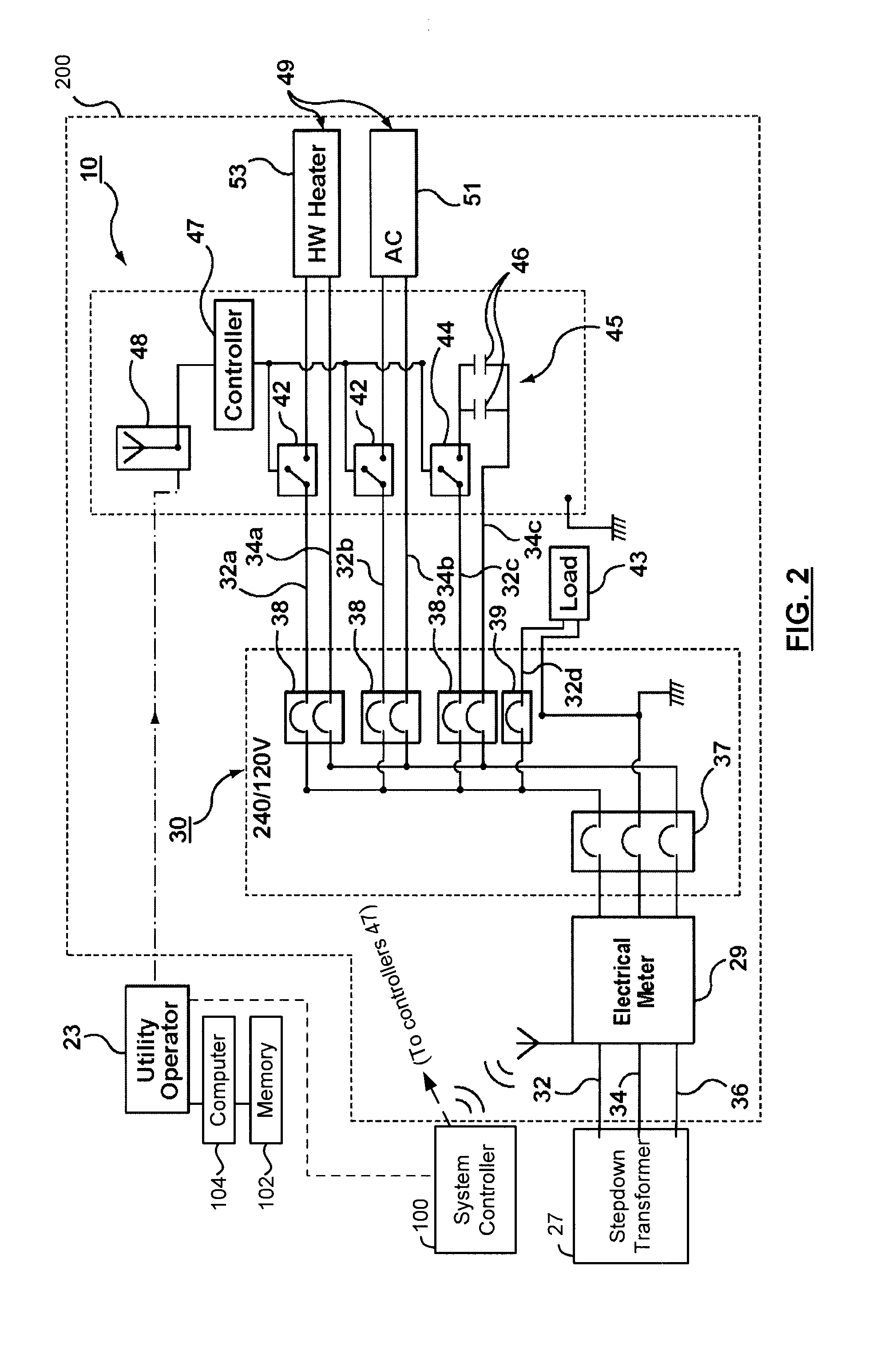Single phase power factor correction system and method
- Summary
- Abstract
- Description
- Claims
- Application Information
AI Technical Summary
Benefits of technology
Problems solved by technology
Method used
Image
Examples
Embodiment Construction
[0021]Referring now to FIG. 1, a plurality of single phase grid correction systems 10 made in accordance with an embodiment of the present invention are shown incorporated into an exemplary electrical power network that provides electrical power to consumers 200 having a single phase electrical panel. The power network includes electric power generators 11, such as hydro-electric, coal or nuclear power plants. (The power network can also include connections to another power network in an adjacent area, and from which power is being purchased on an emergency, or temporary basis, or on a permanent basis.) The generated electrical power is fed to transmission substations 13 comprising transformers, relays and circuit breakers to convert the power to higher voltages for transmission. This is important because higher voltages result in less power loss according to Joule's law. Electrical power is then transmitted at high voltage in three-phase alternating current form, across the transmi...
PUM
 Login to View More
Login to View More Abstract
Description
Claims
Application Information
 Login to View More
Login to View More - R&D
- Intellectual Property
- Life Sciences
- Materials
- Tech Scout
- Unparalleled Data Quality
- Higher Quality Content
- 60% Fewer Hallucinations
Browse by: Latest US Patents, China's latest patents, Technical Efficacy Thesaurus, Application Domain, Technology Topic, Popular Technical Reports.
© 2025 PatSnap. All rights reserved.Legal|Privacy policy|Modern Slavery Act Transparency Statement|Sitemap|About US| Contact US: help@patsnap.com



